When I first landed on Lesvos, I figured I knew what was coming—just another sun-drenched Greek island, right? Well, not even close. Greece’s third-largest island unraveled in front of me as something far richer and more layered than I ever imagined.
Lesvos brings together an authentic Greek experience: 11 million olive trees, legendary ouzo distilleries, a rare petrified forest, and the birthplace of Sappho. This North Aegean beauty covers 1,532 square kilometers of wildly varied landscapes. You’ll find everything from bubbling thermal springs to medieval castles and wetlands that lure over 252 bird species.
My trip took me from the lively port of Mytilene to the fortress town of Molyvos. I wandered through endless olive groves, sipped ouzo in Plomari, and finally made it to Skala Eressos, where Sappho once strolled the shoreline.
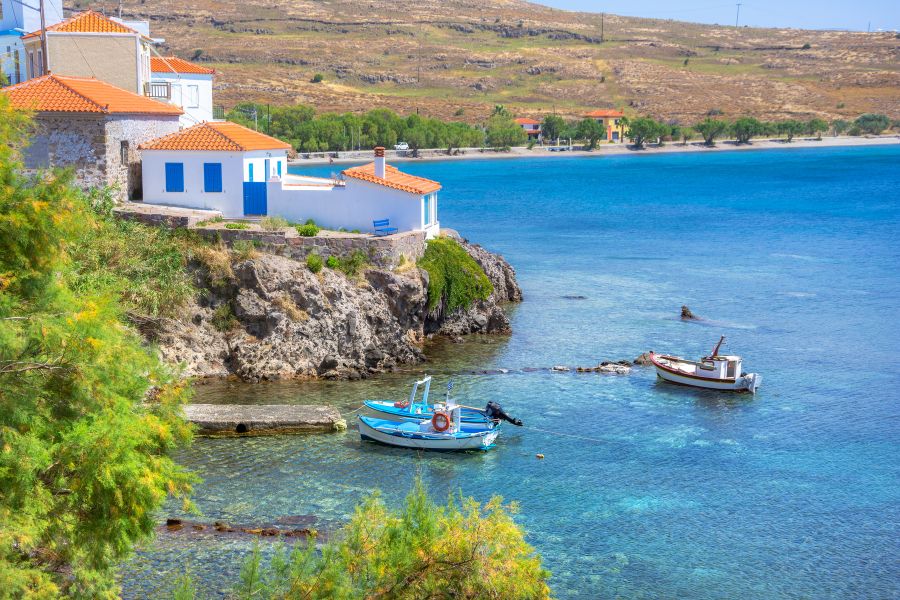
Every corner of Lesvos whispers its own tale. Ancient history, jaw-dropping nature, and traditions older than some countries—all woven together in daily island life.
Lesvos at a Glance: Geography, History, and Cultural Identity
Lesvos sits in the northeastern Aegean, shaped by volcanic drama and centuries of cultural mashups. Here, you’ll find echoes of ancient Greek settlements, Ottoman influences, and a fiercely unique identity that olive groves and poetry helped shape.
Unique Geography and Location in the Aegean Sea
Lesvos stretches across the northeastern Aegean, just a stone’s throw from Turkey. It’s actually Greece’s third biggest island, after Crete and Evia.
The landscape? It surprised me. Volcanic slopes meet lush olive groves. Over 11 million olive trees blanket the hills and valleys—seriously, it’s a silvery-green sea.
Key Geographic Features:
- Volcanic deserts and petrified forests
- Wetlands teeming with migrating birds
- Mountain ranges thick with forest
- Fertile plains along the coast
Lesvos sits near other Aegean islands like Chios. Its location made it a crossroads for ancient traders.
The Petrified Forest here is world-famous and got UNESCO recognition as part of the Lesvos Geopark. These fossilized trees go back millions of years—volcanic eruptions literally turned forests to stone.
Historical Timeline and Influences
Lesvos’s history runs deep—archaeologists found settlements from 3200 BC in Thermi. Five ancient towns stacked on top of each other? That’s some serious history.
Ancient Period:
- 3200-2400 BC: Early settlements, neighbors to Troy
- 800 BC: Aeolians from Thessaly founded colonies
- 570 BC: Locals helped found a Greek colony in Egypt
Aeolians shaped the island’s identity for ages. Mytilene, the capital, was one of six towns they established. They even controlled bits of Asia Minor.
Classical and Roman Era:
Persians, Athenians, and Spartans all fought over Lesvos. Rome took over in 88 BC and, after a rebellion, destroyed much of Mytilene.
Byzantine and Ottoman Rule:
The island endured raids by Slavs, Saracens, and pirates from 769 to 1335 AD. Ottoman Turks seized Lesvos in 1462 and held it until 1912.
All these layers show up in the island’s buildings, food, and everyday life.
Cultural Diversity and Local Traditions
Lesvos gave the world poets Sappho and Alcaeus. Sappho’s verses about love still echo through the island, giving Lesvos its “Sapphic” legacy.
Literary Heritage:
Mytilene takes pride in its literary roots. Museums and cultural spots celebrate these ancient poets.
Modern Cultural Identity:
Olive oil is life here. Families pass groves down the generations, keeping old-school harvesting alive while blending in modern tech.
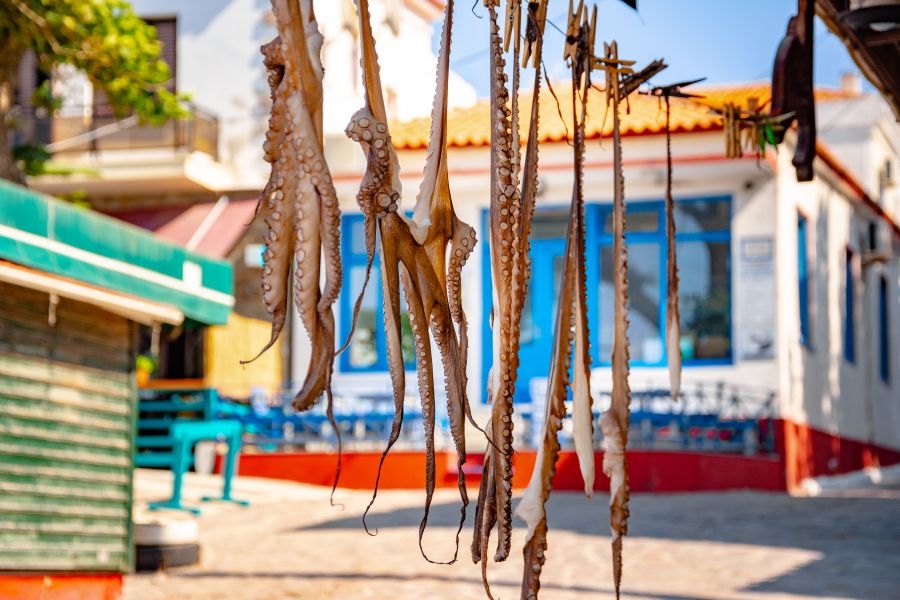
Local Traditions:
- Ouzo-making with old recipes
- Fishing in tiny coastal villages
- Pottery and ceramics
- Folk music and dance festivals
Lesvos’s spot near Turkey means centuries of cultural mixing. You’ll taste it in the food and see it in the buildings.
Religious traditions run deep, too. Byzantine churches and monasteries dot the countryside. Villages throw festivals for patron saints, drawing everyone together.
Olive Groves of Lesvos: The Heart of the Island
When sunlight hits Lesvos, 11 million olive trees shimmer. The island’s olive oil, made from two local varieties, has been the pride of Lesvos for over 3,000 years.
History of Olive Tree Cultivation
I learned that olive growing here goes back at least three millennia. The ancient Greeks even called Lesvos “elaiophytos”—olive-rich Lesvos.
Byzantine times saw steady production, mostly for local use. The Gateluso family, who ruled Lesvos in medieval times, kept the olive tradition alive.
The Ottomans changed everything. They saw how valuable Lesvos olive oil was and pushed for bigger harvests.
Today, the evidence is everywhere. Olive trees—over 11 million of them—cover about 120,000 acres. That’s a lot of olives.
Varieties of Olives and Unique Landscape
Lesvos grows two main types of olives, each with its own personality. The climate shapes their flavors.
Southern Lesvos: Around Gera, farmers favor the “kolovi” olive. The oil is mild and almost buttery.
Northern Lesvos: Up here, “adramytini” olives rule. The oil packs a punch—strong and intense.
Both types share some traits:
- Light golden color
- Sweet, fragrant aroma
- Silky texture
- Low acidity
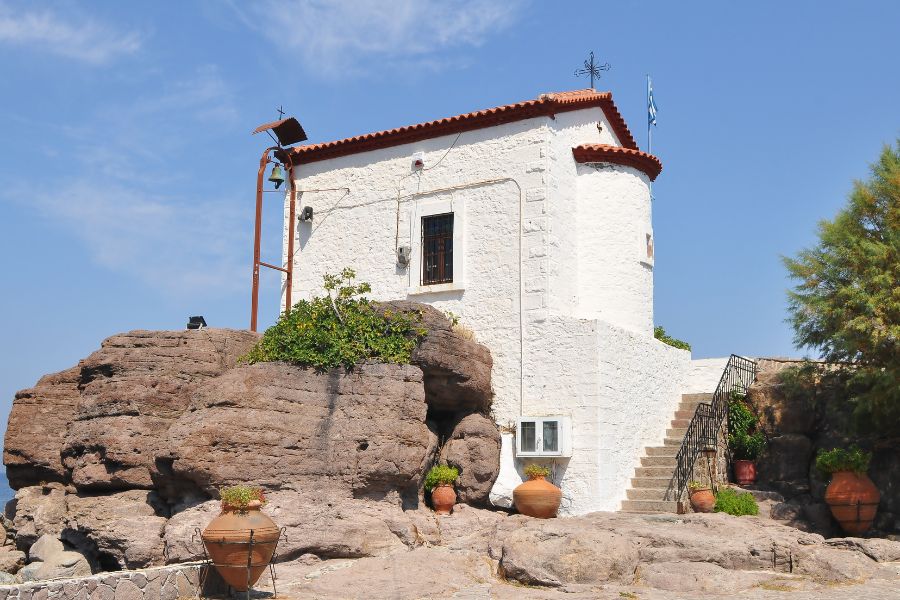
The landscape tells its own story. Olive groves stretch down hillsides, stopping where pine forests begin. This natural edge shields the trees from wind.
I noticed groves running from hilltops right to the sea. Greek poet Odysseus Elytis called these “bays of olive groves”—and it fits.
Olive Oil Production and its Global Reputation
Lesvos makes some of Greece’s best olive oil, hands down. The climate and soil just work for olives.
Weather here means hot, dry summers—perfect for oil-rich fruit. Winters are mild, giving trees a break.
Production Methods:
- Old stone mills still operate
- Modern cold-pressing keeps flavors bright
- Family farms keep a close eye on quality
- More farms are going organic
People here use olive oil for everything—cooking, salads, you name it.
Nutritionally, Lesvos olive oil is a powerhouse. It’s loaded with antioxidants and good fats.
Seasonal Olive Harvest Experiences
Harvest season is a big deal on Lesvos. From October to December, families gather to pick olives—it’s a tradition that brings everyone together.
Traditional Harvest Methods:
- Hand-picking to protect the olives
- Using sticks to knock fruit from branches
- Spreading nets to catch the olives
- Rushing the harvest to the press
Kids learn from their grandparents. The know-how passes down, season after season.
If you visit during harvest, you can join in. Some farms let visitors help pick olives and learn how oil is made.
Harvest time is about community. Neighbors pitch in, and big meals mark the end of a good day’s work.
Fresh-pressed oil tastes nothing like what you buy at home—so vibrant, almost grassy, with a zing that fades over time.
Ouzo Culture: Distilleries, Traditions, and Tastings
Lesvos is ouzo country. Plomari, in particular, is the heart of it all, where family distilleries keep old methods alive. The island’s ouzo pairs beautifully with local seafood meze, making for some truly memorable meals.
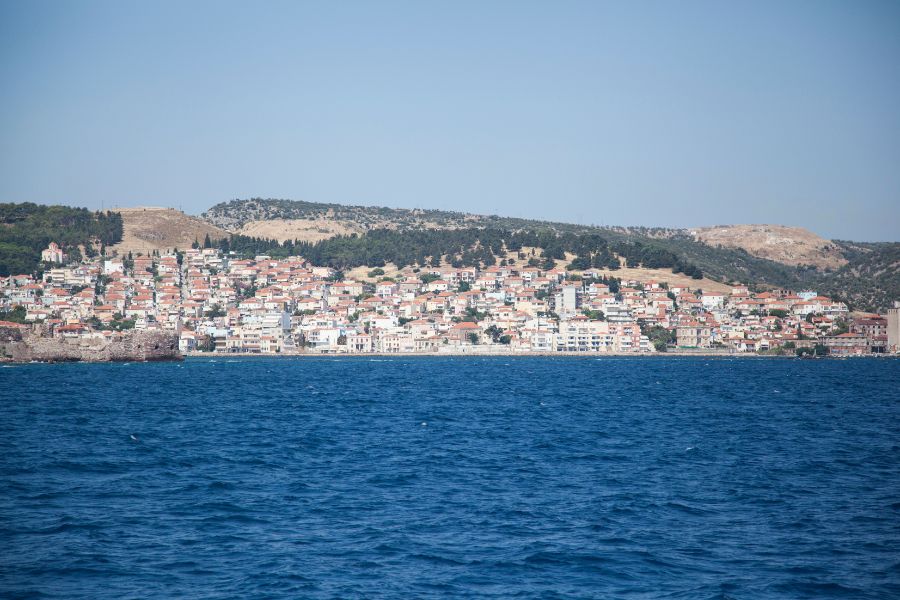
Plomari: The Ouzo Capital and Barbayianni Museum
Plomari sits on Lesvos’s southern coast and claims the title of ouzo capital. Since the 19th century, this seaside town has been distilling magic.
Merchant families from Asia Minor brought their know-how, setting up copper stills and crafting secret recipes.
The Barbayianni distillery offers tours where you can watch traditional ouzo-making up close. They mix grape alcohol with aniseed and pure spring water in huge copper alembics.
Top distilleries to check out:
- Ouzo of Plomari Isidoros Arvanitis (over 120 years old)
- Barbayianni (famous for their Blue label)
- Family-run spots with a more personal touch
During my tour, I learned how they blend fennel, star anise, mastic, cardamom, and even salt from Kalloni’s saltpans. The exact recipes? Still family secrets.
Famous Ouzo Brands and Tasting Rituals
Lesvos’s ouzo brands pop up all over Greece. Ask around, and most café owners will admit the best stuff comes from here.
Well-known Lesvos brands:
- Mini
- Plomari
- Barbayianni Blue
- Various small-batch family labels
The ritual is half the fun. Pour ouzo in a glass, drop in an ice cube, and watch it swirl into a cloudy white. That’s when you know it’s good.
No one drinks ouzo straight—Greeks always sip it slowly, letting the anise and herbs come through. Each brand has its own twist, thanks to those secret blends.
Family distilleries still use old copper stills and recipes passed down through generations. The herbs? Most grow right on the island.
Local Meze Pairings and Social Customs
Ouzo isn’t just a drink—it’s a social event. I never saw anyone have ouzo without food.
Classic meze pairings:
- Sardines and octopus
- Grilled fish
- Olives and tangy local cheeses
- Veggie plates
The custom is simple: order ouzo, share small plates, and linger for hours. Seaside tavernas fill up at sunset with groups chatting, playing backgammon, and soaking up the view.
Ouzo drinking is never a solo affair. It’s about community, laughter, and taking your time.
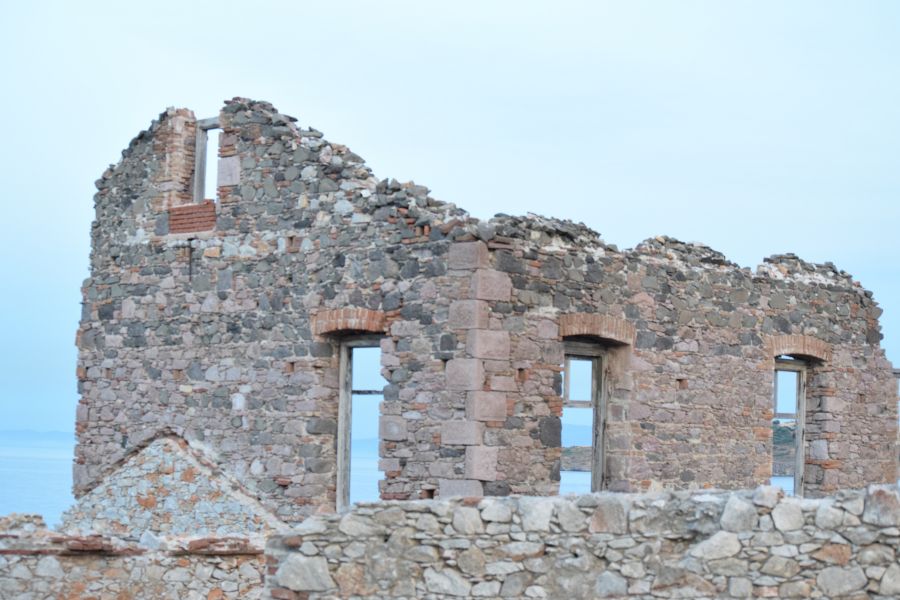
Taverna owners serve ouzo with ice water on the side. Locals add water slowly, adjusting the strength and coaxing out those herbal notes.
This isn’t just a drink—it’s a taste of Greek island life: slow, social, and full of flavor.
Majestic Landscapes: Beaches, Hot Springs, and Natural Wonders
Lesvos’s coastline has something for everyone—family beaches, healing hot springs, and the otherworldly Petrified Forest out west.
Popular Beaches and Coastal Villages
Lesvos’s beaches surprised me with their variety. Petra Beach quickly became my favorite for family days—calm, shallow water and golden sand, all watched over by a dramatic rock crowned with a tiny church.
Anaxos stretches along a pebbled shore. The water is always clear, and you’ll find tavernas right on the sand. Sunset here? Unbeatable.
At Skala Kalloni, I swam in a sheltered bay that stays calm even when the wind picks up. The nearby salt flats bring flamingos in during migration—an unexpected bonus.
Agios Isidoros is quieter, with a cozy harbor and a spotless beach. I feasted on just-caught seafood at little restaurants right by the water.
Melinda Beach is for those who want solitude. A short hike down brings you to turquoise water and a peaceful vibe that’s hard to find elsewhere.
Natural Hot Springs and Healing Retreats
Thanks to its volcanic roots, the island hides several natural hot springs. When I made my way to the thermal baths near Therma, the water hit a toasty 40°C, no matter the season. Locals swear the mineral-rich pools work wonders for skin and aching joints.
Polichnitos offers another cluster of thermal springs. I slipped into the outdoor pools, olive groves all around, and honestly, the steady warmth made the experience inviting—even when the air felt chilly.
People have flocked to these springs for centuries, hoping for a bit of healing. Greek visitors especially seem to come just for wellness retreats. Some facilities are just simple rocky pools, while others have gone full spa mode, with changing rooms and even little cafes.
Exploring the Petrified Forest of Sigri
Stumbling across the Petrified Forest near Sigri felt like a real find. This UNESCO Global Geopark is home to trees that volcanic eruptions turned to stone 20 million years ago.
I wandered along the marked trails through the main site. The fossilized trunks still show off bark patterns and tangled roots. Some are massive—20 meters long and 3 meters wide.
At the Natural History Museum in Sigri, I picked up the story of how volcanic ash buried this ancient forest. Turns out, these fossilized trees once belonged to a lush subtropical ecosystem.
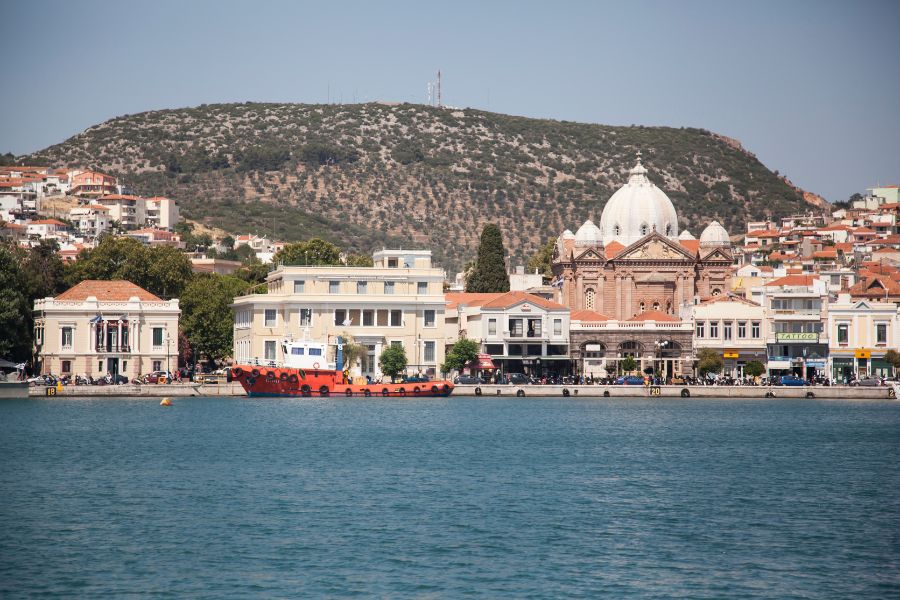
Sigri village itself is a little gem, with a sleepy harbor and a medieval castle. I stayed there to check out several petrified forest sites scattered around the western tip. Each spot highlights different types of fossilized trees and dramatic volcanic rock.
Heritage Towns and Villages: A Tapestry of Local Life
Lesvos reveals its soul in places like Mytilene, with its cultural treasures, and in mountain villages where old traditions live on. The island’s patchwork of towns shows off everything from Byzantine monasteries to stone villages where craftspeople still work by hand.
Mytilene: Historical and Cultural Capital
Mytilene is more than just the island’s main port—it’s the cultural pulse of Lesvos. The town tells its story through neoclassical mansions, Ottoman buildings, and Byzantine churches.
As I roamed the old quarter, narrow cobblestone streets led me past traditional houses. The Archaeological Museum holds treasures from ancient Lesvos, while the Byzantine Museum is packed with religious art.
The castle fortress towers over the harbor, built by the Genoese in the 14th century. The view from up there? Stunning—Turkey’s coast shimmers across the Aegean.
Every morning, local markets buzz near the harbor. I watched vendors lay out fresh fish, cheeses, and crafts. Cafes spill onto the streets, serving strong Greek coffee and irresistible pastries all day long.
Charming Villages: Molyvos, Agiassos, and Vatousa
Molyvos perches on a hillside above the sea, its cobbled lanes weaving between stone houses with red roofs. At night, the Venetian castle glows, casting a magical light over the whole place.
Down by the harbor, I found tavernas serving just-caught seafood and local ouzo. The village beach is a sweet spot for both lazy sunbathing and family water sports.
Agiassos hugs the slopes of Mount Olympos, shaded by olive and chestnut trees. The village keeps its craft traditions alive with working studios. Artisans here shape wood, mold pottery, and craft unique souvenirs.
At the Folk Art Museum, I saw old tools and handmade crafts. Around the main square, century-old cafes serve kainari, a spiced herbal tea you’ll only find on Lesvos.
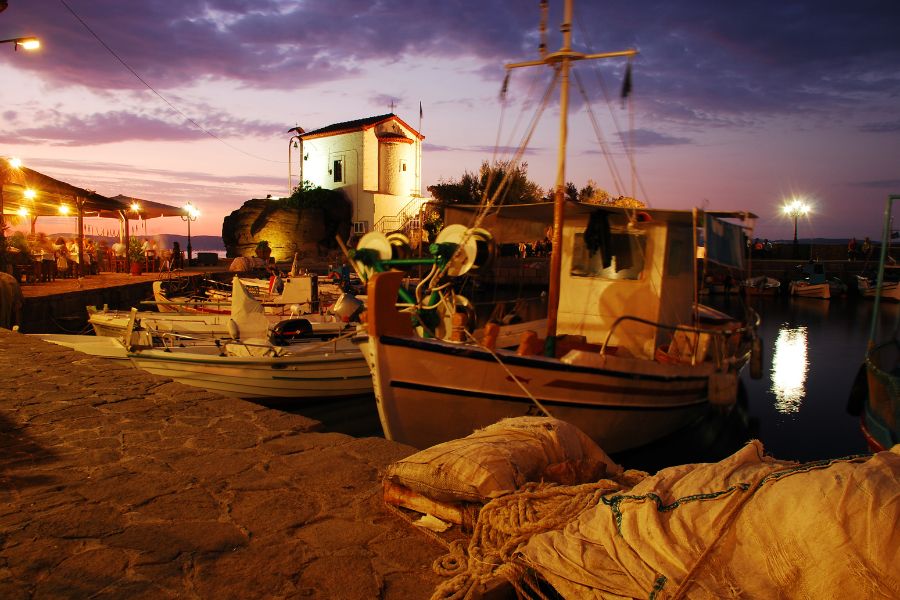
Vatousa is still a working agricultural village. Stone houses line sleepy streets, and locals tend to gardens and olive groves.
Ancient Sites: Roman Aqueduct and Monasteries
Near Mytilene, the Roman aqueduct stands as a testament to ancient engineering. These stone arches once delivered spring water from the mountains right into the city. Even after nearly two thousand years, several stretches remain impressively intact.
Byzantine monasteries dot the landscape. The Monastery of Saint Raphael draws both pilgrims and art lovers. Its chapel glows with frescoes and old icons.
I made a stop at the Monastery of Taxiarchis near Antissa. Built in the 16th century, it houses a small library of religious texts and offers gardens perfect for a quiet stroll.
These sacred places hold onto both their architectural beauty and spiritual traditions. Many still host religious communities, but they welcome respectful visitors all year.
A Soulful Sapphic Legacy: Sappho, Skala Eressos, and LGBTQ+ Culture
Lesvos carries the legacy of Sappho, the ancient poet whose name gave us both “sapphic” and “lesbian.” The seaside village of Skala Eressos has evolved from Sappho’s quiet hometown into a lively international hub where LGBTQ+ women gather every year to celebrate community and culture.
Sappho and the Ancient Poetic Tradition
Sappho lived on Lesvos around 630-570 BCE, in the village of Eressos. She wrote poetry about love between women, so moving that her name became shorthand for female same-sex love.
Most of her poems have slipped away with time. Only fragments survive now. One famous line: “I tell you/someone will remember us/in the future.”
She invented a poetic rhythm called sapphic meter, which became a classic Greek form. The ancient Greeks ranked her among their greatest lyric poets.
Sappho’s lasting impact:
- Her name stands for female same-sex love
- The island’s name gave us “lesbian”
- Her poetry shaped literary forms for centuries
In ancient Greece, male relationships were often accepted, but women’s sexuality usually stayed hidden. Sappho’s open poetry about loving women was pretty radical.
Skala Eressos: Birthplace and International Gathering Point
Skala Eressos sits right on the coast, close to where Sappho was born. The village has one main strip—bars, restaurants, and hotels all facing the beach.
In the early 2000s, LGBTQ+ women started coming here to connect with Sappho’s legacy. They wanted to find community in the place where she lived and wrote.

The village has since become a “modern-day mecca for queer women.” Every year, thousands visit from all over the world. Many return again and again, forming friendships with locals and each other that last for years.
What makes Skala Eressos stand out:
- Wide sandy beach and sparkling turquoise water
- Welcoming locals and a laid-back Greek vibe
- Intimate, small setting ideal for forming community
- Direct link to Sappho’s birthplace
Tourists and locals here develop a special bond. Friendships cross generations and cultures, and the sense of belonging is real.
Modern LGBTQ+ Scene and Cultural Festivals
Each September, the International Eressos Women’s Festival takes over the village for two weeks. The event focuses on lesbian, bisexual, and queer women’s experiences, creating a space for sapphic community to thrive.
The festival offers a bit of everything:
- Yoga and wellness classes
- Live DJ sets and music
- Scuba diving and hiking adventures
- Workshops and talks
I found the festival’s energy unique—a space where women can just be, away from patriarchal pressures. Attendees come from all over, with ages sometimes spanning four decades.
The festival tackles real issues facing LGBTQ+ women. These days, it’s harder to find permanent queer spaces—lesbian bars and clubs keep disappearing.
This festival fills that gap, bringing women together to connect, learn, and celebrate in Sappho’s homeland.
Frequently Asked Questions
Lesvos is steeped in history thanks to Sappho and offers something to travelers all year. The island is famous for its petrified forests, ouzo-infused cuisine, safe vibe, and quirky local customs.
What historical significance does Sappho have on the culture of Lesvos?
Sappho was born on Lesvos around 630 BCE and became one of the most celebrated lyric poets of ancient Greece.
Her poetry explored love, beauty, and relationships between women. That’s why “lesbian” comes from her link to the island.
Today, Sappho’s legacy shapes Lesvos’s cultural identity. Museums and cultural sites across the island honor her literary contributions.
Travelers often come to Lesvos just to connect with Sappho’s story. Her influence on Greek literature is still felt worldwide.
Can you describe the climate and best times of year to visit Lesvos?
Lesvos enjoys a Mediterranean climate with four seasons. The weather is so good that olive trees thrive everywhere.
Summers are warm and sunny—perfect for the beach. Still, I’d say Lesvos is worth visiting any time.
Spring brings wildflowers and fresh breezes. Fall is great for hiking, with mild temperatures.
Winters are gentle compared to northern Europe. The changing seasons make the island ideal for olive growing.
What are the must-see attractions in Lesvos’s petrified forests?
You’ll find the Petrified Forest near Sigri, on the island’s west side. It draws visitors from all over for good reason.
Ancient trees, millions of years old, now stand frozen in stone thanks to volcanic eruptions.
Don’t miss the outdoor forest park and the Natural History Museum in Sigri. The museum lays out the science behind the petrification.
Walking paths wind through the fossilized trees. You can see trunks, branches, and roots, all preserved in rock.
How does the local cuisine reflect Lesvos’s cultural heritage?
Lesvos cuisine is all about local ingredients. The famous ouzo here even flavors some dishes.
Olive oil from the island’s millions of trees appears in almost every recipe. You’ll find specialties like Kalloni bay sardines, local cheeses, and honey.
Classic Greek dishes—spanakopita, moussaka, tzatziki—are everywhere. Meze-style dining lets you sample a bit of everything.
The food reflects both the island’s farming roots and its ties to the sea. Fresh fish and mountain herbs make for unforgettable meals.
What safety considerations should travelers be aware of when visiting Lesvos?
Lesvos feels safe, with low crime and friendly locals. Healthcare for travelers is reliable too.
Public transport is generally easy and safe, but mountain roads can be twisty—drive with care.
Natural disasters are rare, though the island’s volcanic nature is always in the background.
When visiting churches or monasteries, dress modestly to show respect for local customs.
What unique traditions can be experienced on the island of Lesvos?
Lesvos feels like a place where time slows down, especially in its mountain villages. Agiasos, for example, bursts with color and character—you’ll spot local artisans working on wood carvings right in their workshops.
Ouzo isn’t just a drink here; it’s a way of life. You can actually step into small distilleries, chat with the folks who make it, and see firsthand how the anise-flavored spirit comes together.
Festivals? Lesvos knows how to throw a party. Locals celebrate religious holidays and harvests with live music and folk dancing that pretty much sweeps everyone up in the excitement.
Village tavernas aren’t just places to eat—they’re the beating heart of the community. People gather, share stories, and you’ll notice the old-school hospitality that’s still alive and well.

